In W̱SÁNEĆ territories, removing invasive English ivy makes way for indigenous plants
Every month, Tseycum First Nation artist Sarah Jim invites volunteers to pull the dense vines choking native species on her family’s land.
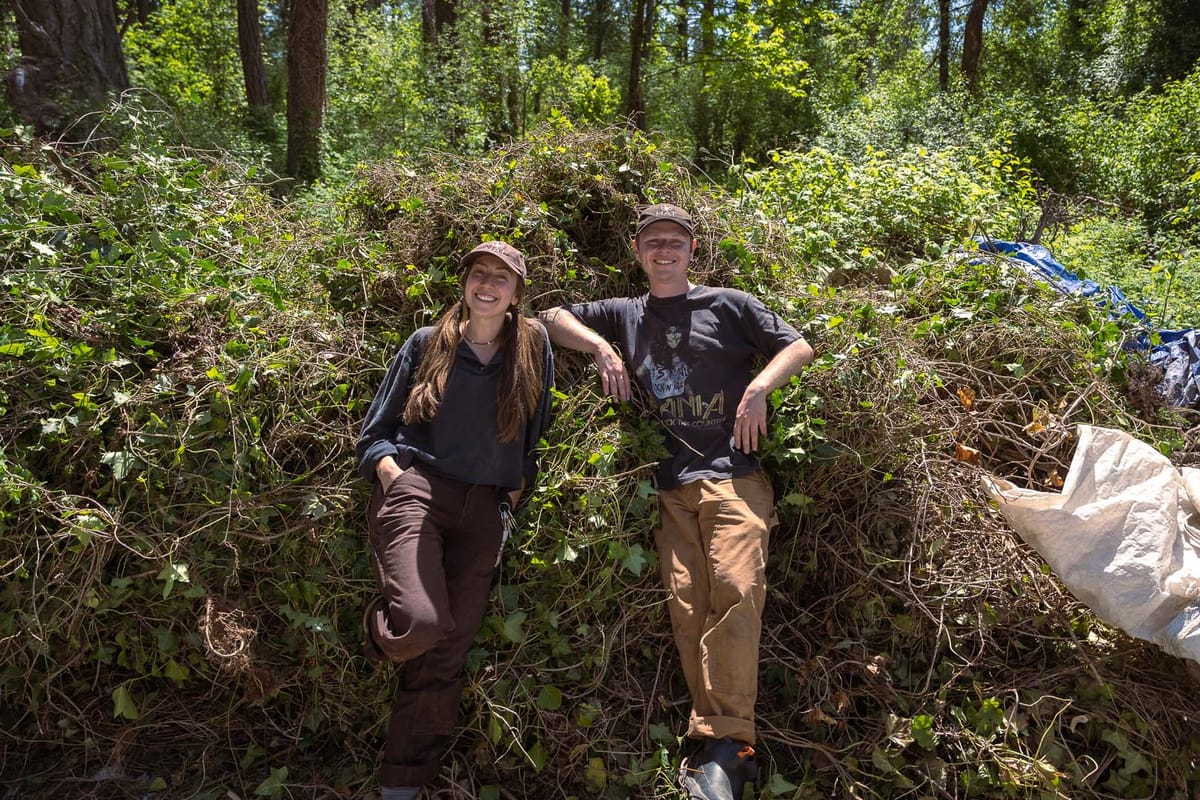
This story was originally published by IndigiNews, which aims to provide digital journalism driven by Indigenous communities’ needs while contributing to the long-term sustainability of independent Indigenous-centred media.
English ivy (Hedera helix) is a fast-growing evergreen vine that will flourish nearly anywhere. It thrives in multiple soil types and under most weather conditions, with dark, waxy leaves that rampantly weave through forest networks, up walls and along buildings, fences and tree trunks.
Sarah Jim is W̱SÁNEĆ from the village of W̱S͸ḴEM (Place of Clay), the territory also known as the Saanich peninsula on Vancouver Island in British Columbia, Canada. As she got older, she started spending more time in her family’s forests and noticed that English ivy – originally brought over from Europe – was a significant problem.
Jim took it upon herself to remove the plant, cutting the ivy off the trees and pulling it from the ground. But because the vines blanketed most of the forest floor and had tightly wound themselves around almost all the trees, she quickly realized she would need help.
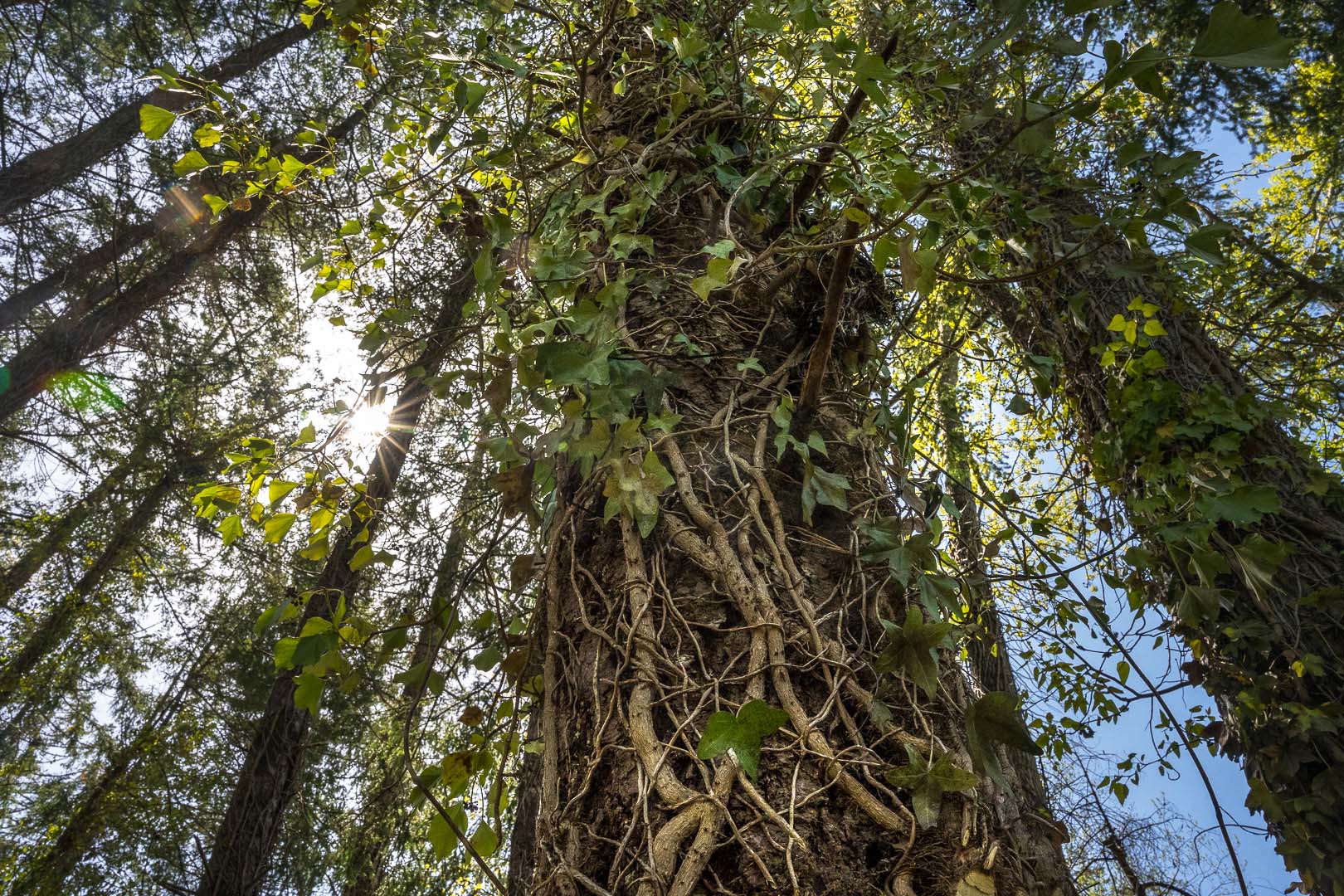
So in the spring of 2021, she founded the W̱S͸ḴEM Ivy Project (Healing the Place of Clay) and began inviting volunteers to help. By summer, she had partnered with Habitat Acquisition Trust (HAT), a nonprofit focused on land restoration, which has a vast volunteer outreach and was able to provide resources so that the pulls could happen once a month.
This tending is an act of decolonization, healing and cultural revitalization. English ivy and other invasive plants have dramatically altered traditional forest ecosystems over time by choking native plant species. Because of its aggressive and fast-growing nature, English ivy is seen as a plant pathogen as it invades forest understories, suppressing and smothering growth. However, by removing the plant, volunteers create space for indigenous plants to return, a tending that Jim calls “a physical act of decolonization.”
“Most of us love nature and appreciate it for its beauty, but living in relation to land through ecosystem restoration, stewardship or harvesting creates a different appreciation and perspective,” says Jim. “Once I started seeing the land for who it was and who it was trying to be, that’s when I realized the ivy was not letting the land be who it was meant to be.”
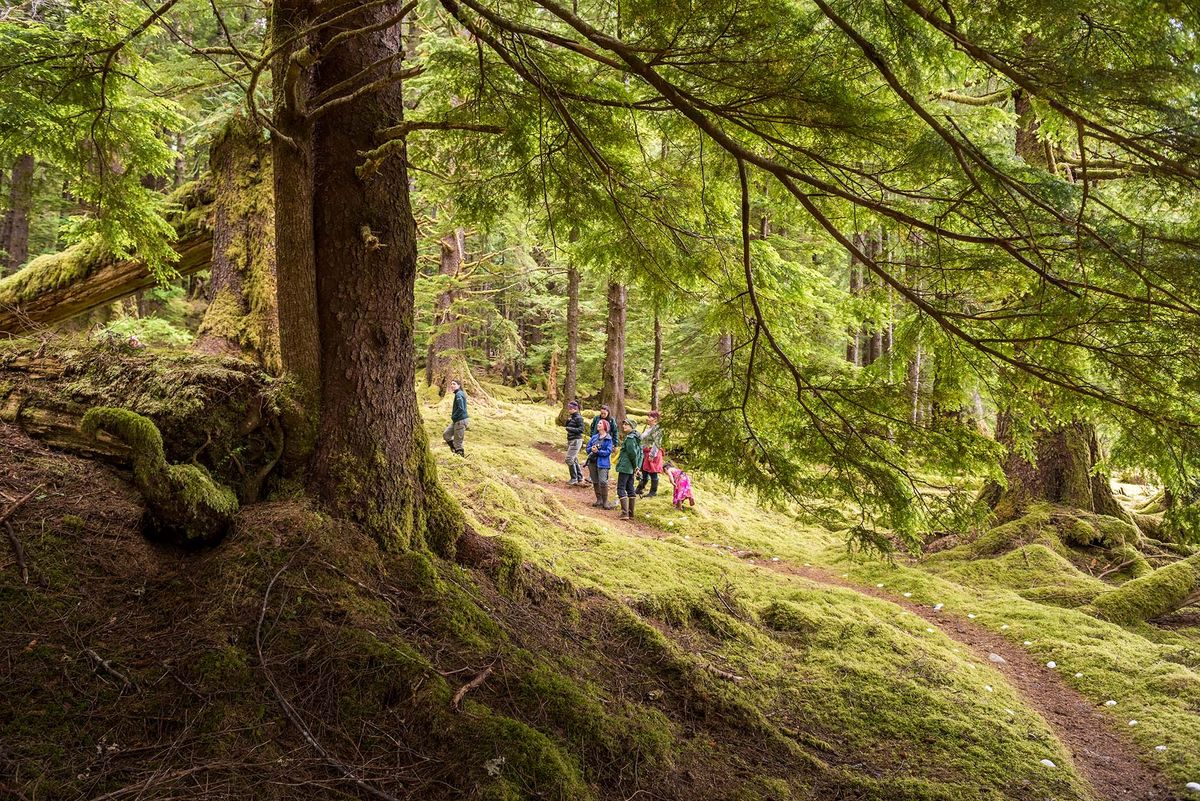
Jim has been doing restoration work since 2018, when she began working with PEPAKEṈ HÁUTW̱, a non-profit focused on restoring W̱SÁNEĆ ecosystems and promoting Indigenous food sovereignty. She is also a visual artist whose work consists of murals, paintings and prints. Tending to the land is the main inspiration for her art.
Prior to working at PEPAKEṈ HÁUTW̱, Jim’s plant knowledge was limited because she didn’t have the privilege of growing up with a rich cultural upbringing due to the impacts of colonization.
As she’s fostered a deeper connection to her home territories, working on the land has helped her become more insightful about how language, culture, traditional knowledge and art are all intimately connected to the natural realm.

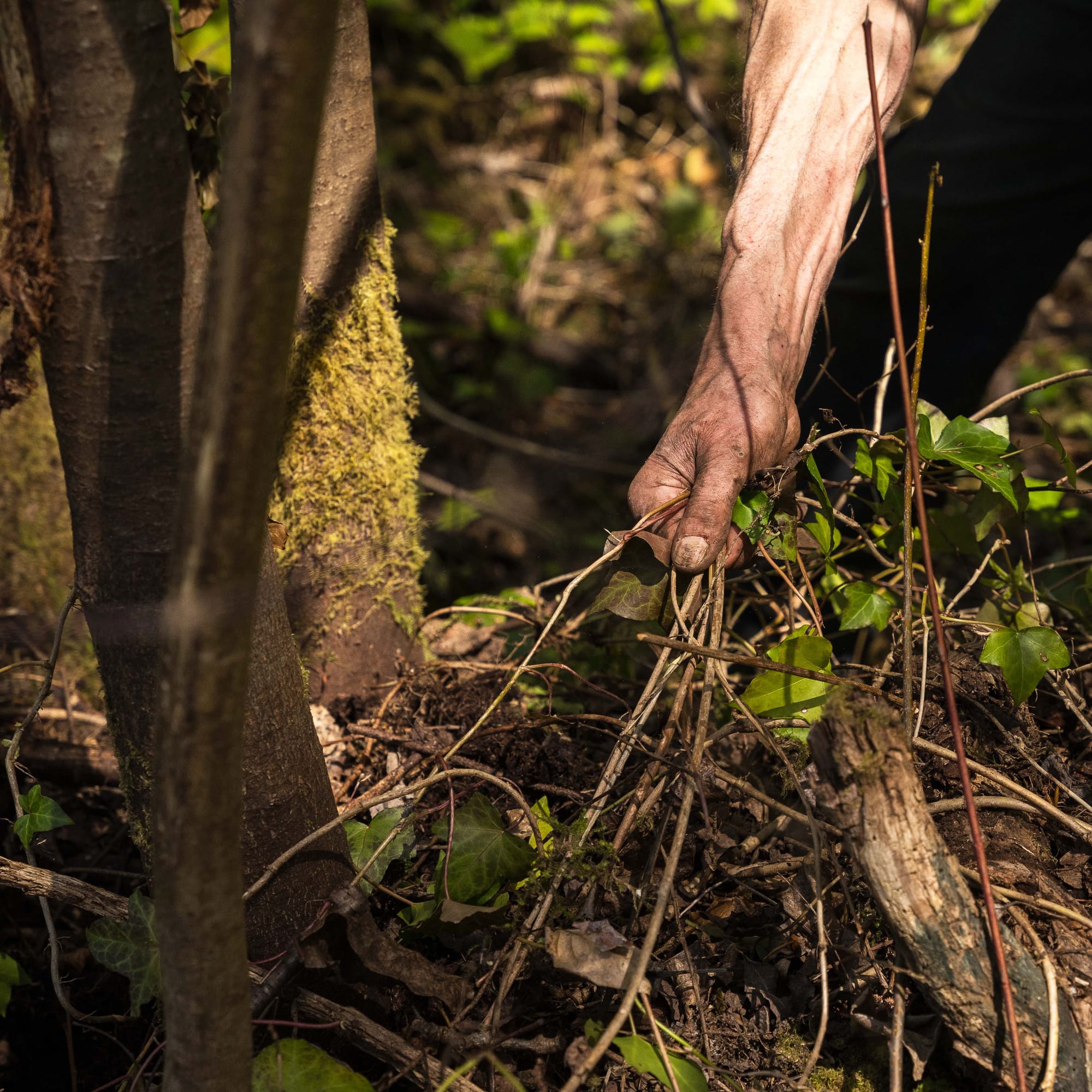

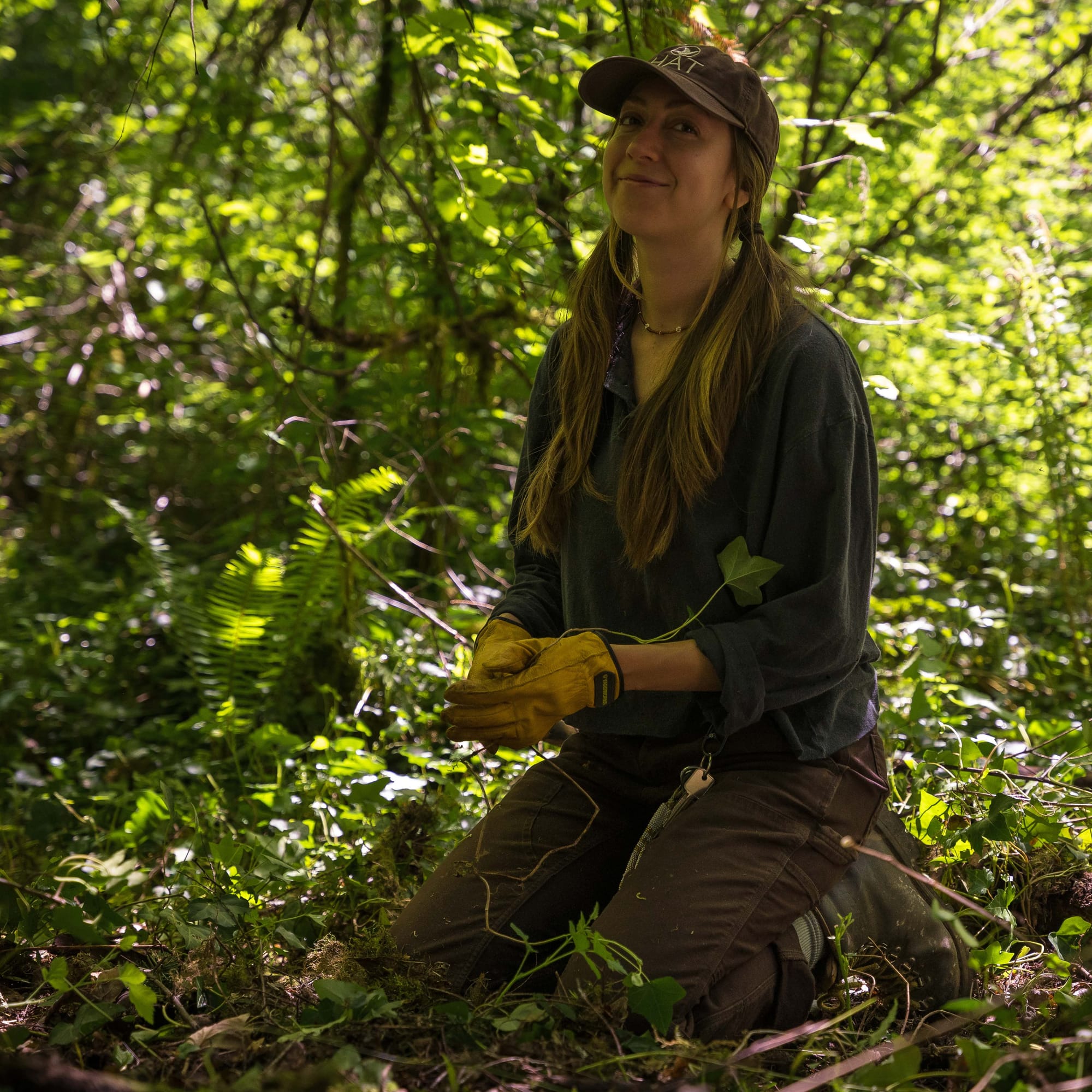
Clockwise from top left: Native trailing blackberries; a volunteer removing ivy; Sarah Jim; ivy growing up a tree trunk. Photos: Karissa Chandrakate.
Since founding the W̱S͸ḴEM Ivy Project a couple years ago, Jim and her family have seen positive changes in the forest. Native plants such as trillium and trailing blackberries have returned, along with animals such as ĆIYE (Steller’s jay) and WEXES (chorus frogs). “When you spend more time in a place, you care about and appreciate it a lot more because of that relationship being built,” says Jim.
Max Mitchell, an employee at HAT, has been supporting the W̱S͸ḴEM Ivy project since it started. Since partnering with the project, he says there have been drastic changes to the land because of the strategic approach to removal. The first step was to target the trees with ivy growing on them since the climbing ivy plants produce berries that are then consumed by birds that spread the seeds.
“When you walk into the forest, if you know what you are looking for, the first thing that you will notice is the ivy climbing on all of the trees, which is all dead now,” he says. “This feels like a major success in managing the ivy here.”
Common invasive plants like English ivy are considered invasive because they can colonize an area they are introduced into, establishing themselves and quickly spreading and monopolizing resources.
English ivy was intentionally introduced to North America as an ornamental plant by settlers during the 1800s. Once established in an area, its climbing vine crawls up and encircles the trunks of trees. This weakens the tree by suppressing nutrient uptake and making it susceptible to diseases. Shrubs begin to die because light can’t reach their leaves. It’s no wonder its Latin name, “Hedera,” comes from the Indo-European root word meaning to seize, grasp or take.

English ivy has become a significant problem across Turtle Island. It can impact soil chemistry, fire, geomorphological processes and hydrology, all crucial to a functioning ecosystem. Mitchell says that the native plants in the W̱SÁNEĆ ecosystems haven’t evolved alongside a plant like ivy, so they have difficulty competing with it for resources. “What will often happen then is that the ivy will completely take over an area, creating a monoculture that crowds out what could potentially be habitat for a diverse array of native plants,” he says.
Garry oak ecosystems are highly threatened, sensitive ecosystems that in Canada are restricted to the southeast coast of Vancouver Island and the southern Gulf Islands. (They also exist in nearby Washington and Oregon.) They are extremely significant to the W̱SÁNEĆ people both from an ecological and a cultural perspective. Less than 5 percent now remain in near-natural conditions. Several anthropogenic factors relate to their decline, and the introduction of invasive plants is one of them.
Jim believes that the forests of Tseycum were once a Garry oak ecosystem because she has found Garry oak trees in the middle of the forest while removing ivy. “It was really strange, because Garry oak trees don’t like to be shaded,” she says. “They like big open spaces with lots of sun, so it makes me wonder if it used to be a Garry oak meadow. But because there weren’t regular burnings happening – burning was outlawed because the settlers were afraid of fire – the forest grew around these oaks.”
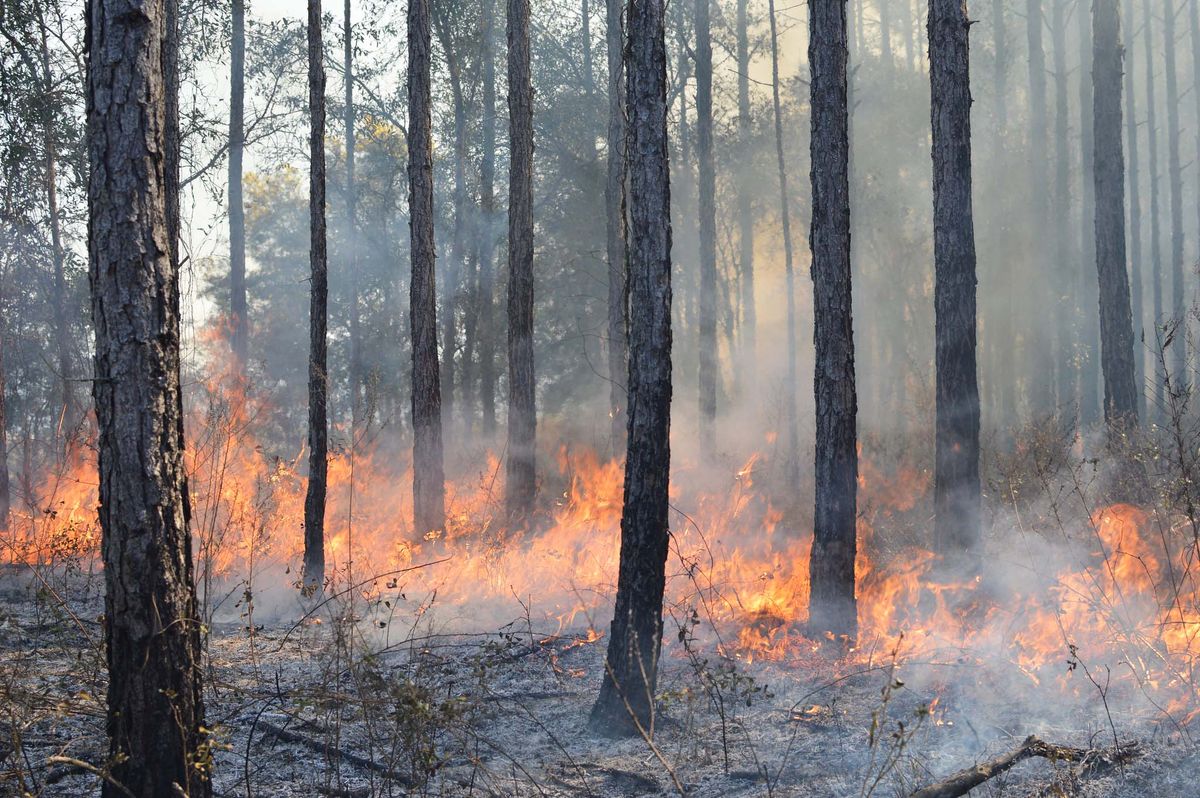
The volunteering aspect of the project has also created a tangible way for non-Indigenous people to show support. In an era of reconciliation, many people want to learn about Indigenous culture and build relationships. However, reciprocity is key.
Mitchell says he’s noticed that settler organizations often approach reconciliation in an extractive way, with people thinking about a particular desired outcome from that partnership. At the same time, he says, it’s crucial for settlers to do this work since the settler worldview of economic growth and extraction of the natural world has facilitated the ecological crisis that the world is seeing today. “This partnership feels like it is based on friendships, which is my preferred way to work,” he says of the W̱S͸ḴEM Ivy Project. “Doing restoration, and especially supporting Indigenous-led restoration, is an actionable unlearning of this colonial worldview where you are decolonizing the land through the physical act of removing non-native invasive plants from a native ecosystem.”


Volunteers at work. Photos: Karissa Chandrakate.
Jim says that when she first started learning about plants, many people wanted to go on plant walks, but she felt uncomfortable with this dynamic. “It feels transactional because I get paid x amount to walk around and talk about plants. It felt very one-sided and wasn’t very productive for me,” she says. “Most people want to know what the plants can do for them. I turn it around and ask them what we can do for [the plants]. So restoration is a really good way to direct people to learn about plants in a reciprocal and meaningful way.”
At the end of every pull, Jim facilitates a sharing circle. In one of her circles, Jim spoke about the act of restoration and how it isn’t a one-time engagement. It’s a commitment that requires showing up consistently to build a relationship with the land and with each other. “By working together to heal the land, we are, in turn, coming together to heal relationships with each other, with ourselves and with this place,” she said to the group. “Restoring the ecosystem not only promotes biodiversity, reestablishes habitat for plants and animals and creates a more resilient landscape to climate change, but it also reconnects people to place.”
People are also invited to share their thoughts and feelings after the pull, and without fail, people report feeling calm, grounded and connected. “Everybody is so thoughtful and generous with what they share, like how being on the land and pulling ivy with the community is good for their mental health and how it’s healing for them. It feels like an important thing to be facilitating because in this economy, in this climate, people have a need for autonomy and empowerment and healing,” says Jim.
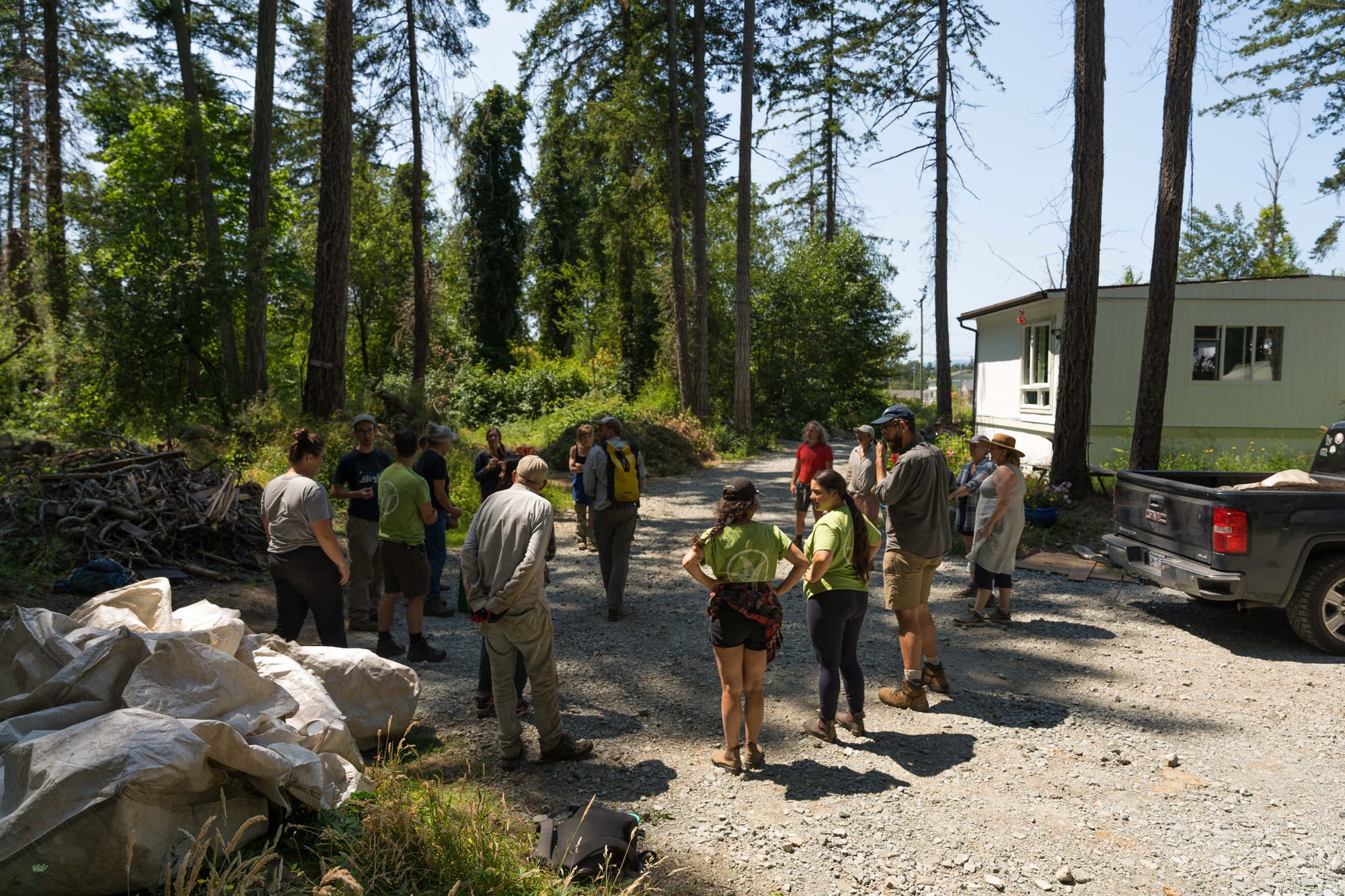
Speaking to settlers in particular, Mitchell says he’s witnessed how impactful involvement in the project has been to the volunteers. “I think another important part of the work is to restore community connections between people,” he said. “It sometimes feels like we live in an increasingly individualistic, siloed world. In order to address the biodiversity crisis, I think we need to engage in work that restores not only the individual’s connection to land but to their wider community as well.”
Mitchell encourages the community to seek out projects like the W̱S͸ḴEM Ivy Project that are happening in the territories that they live in. “I think taking action to make an impact can be extremely empowering, as it gives you this feeling of agency that you can do something that helps and contributes to positivity in the world,” he says. “Going out there and doing something in person, in community, can be powerful in a way that engaging in online activism just isn’t able to be.”
Jim also hopes that volunteers will take what they learn from the W̱S͸ḴEM Ivy Project and feel motivated to create their own projects so it creates a ripple effect.
Jim predicts that it may take several years to get the ivy under control on her family land. ȽÁU, WELṈEW̱, also known as John Dean Provincial Park, is located near Sidney on southern Vancouver Island, not far from Jim’s family’s land. Jim says she’s heard stories that the park used to be covered in ivy, but with the help of volunteers, it was eradicated in 10 years. Though that’s a long time to wait, she is in no hurry for the project to “wrap up” thanks to the strong community she has built through the project. “I joke about hoping the ivy is never gone because people won’t come here anymore,” she says. “But it’s going to be a long and beautiful project.”



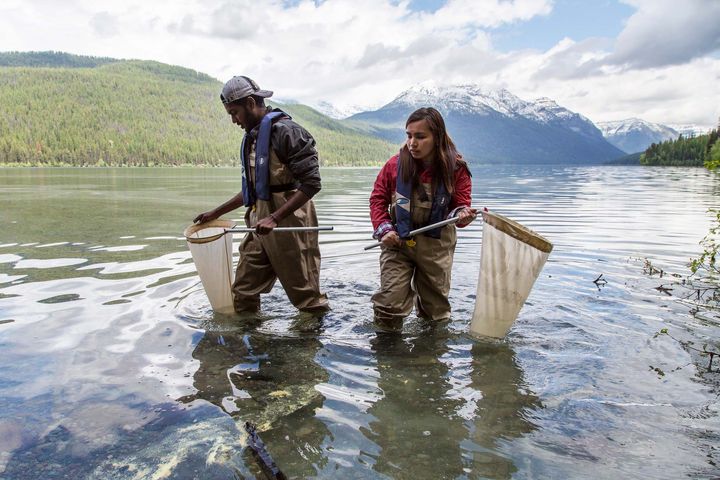
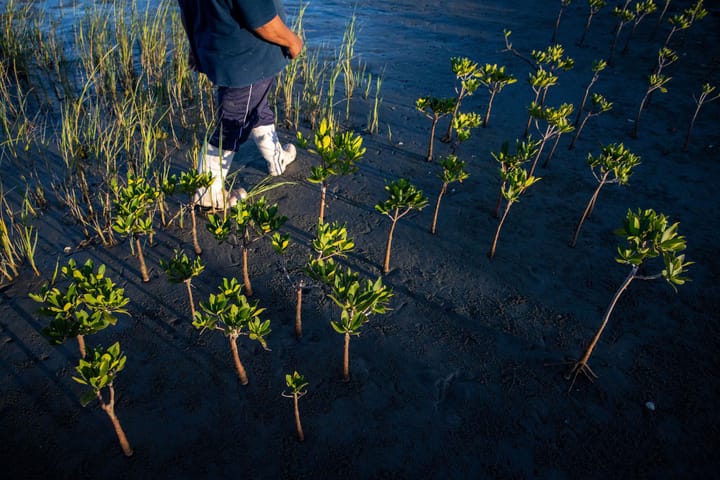
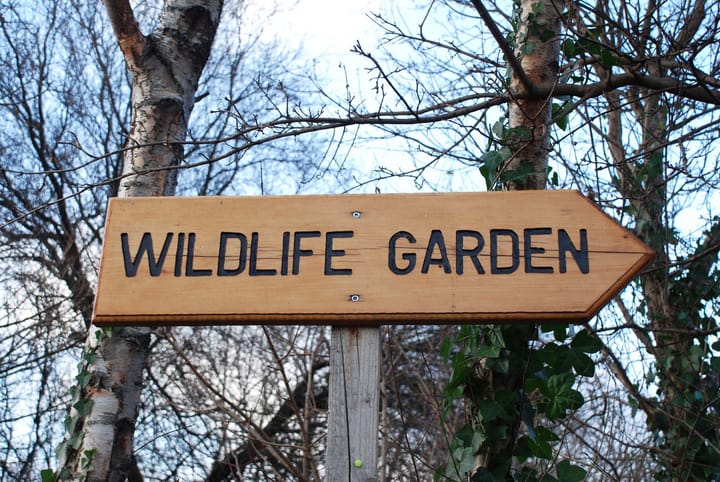
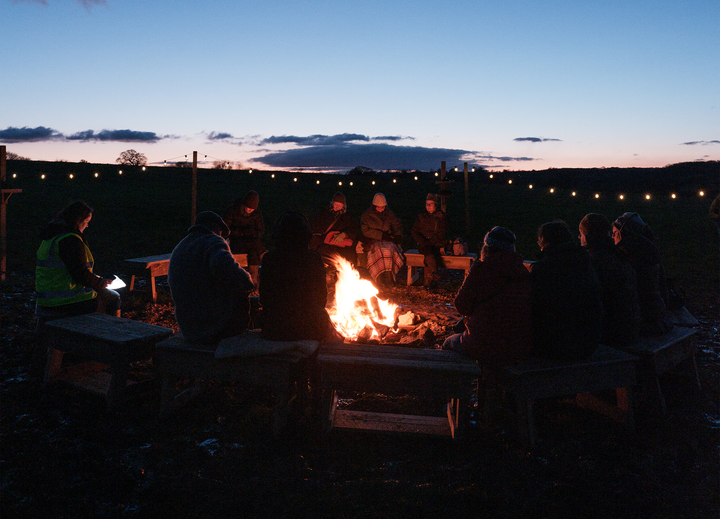

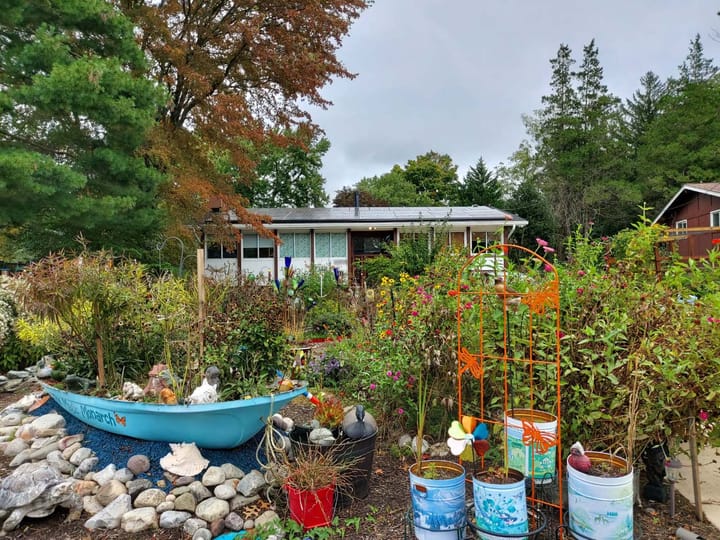
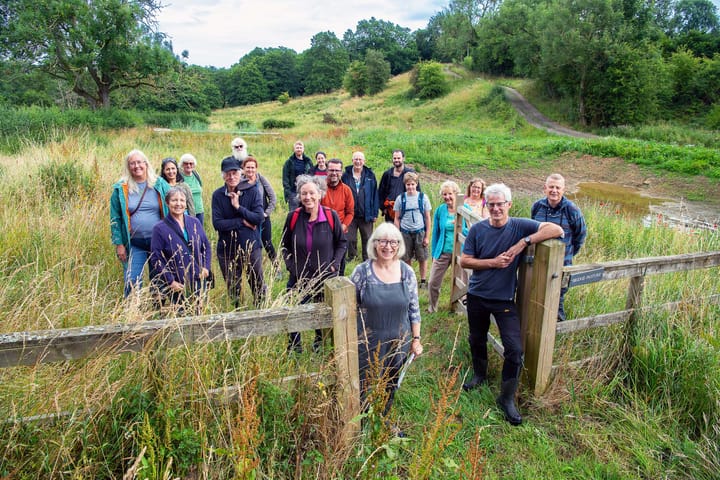
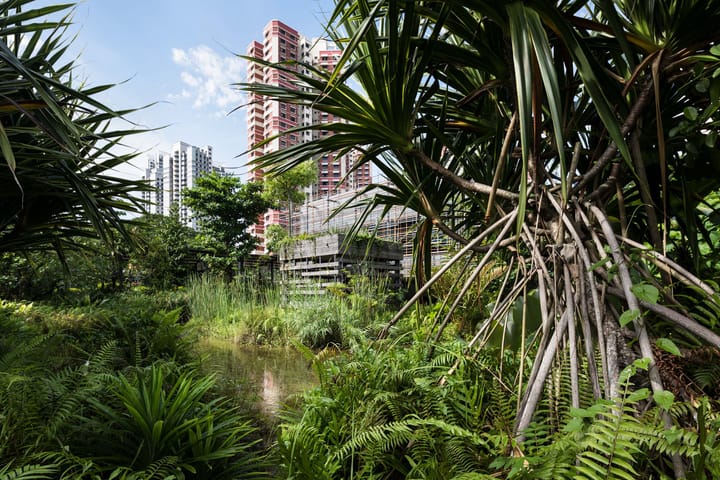

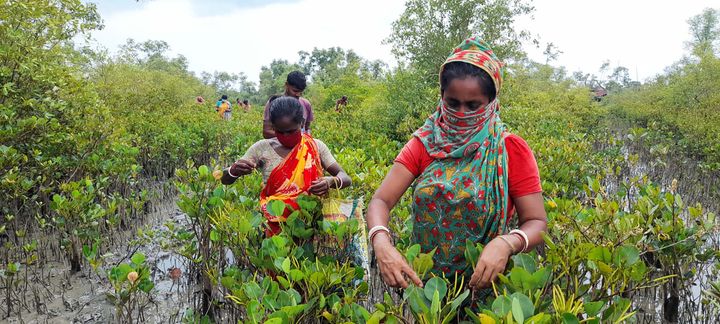
Comments ()